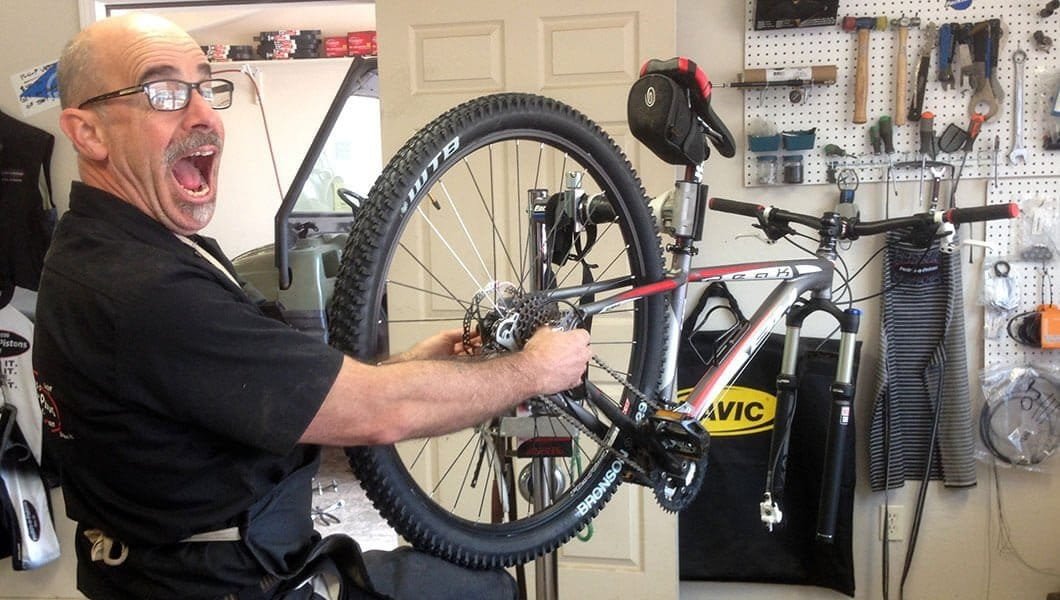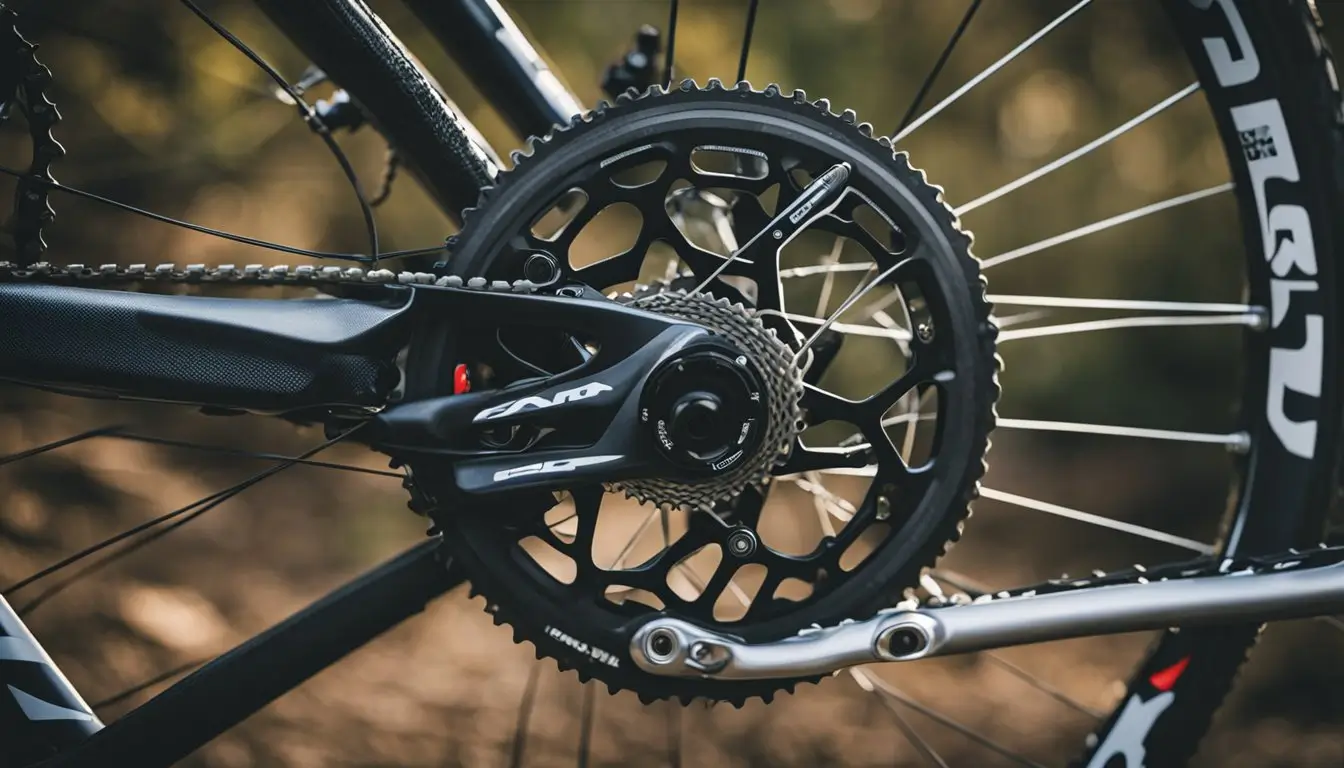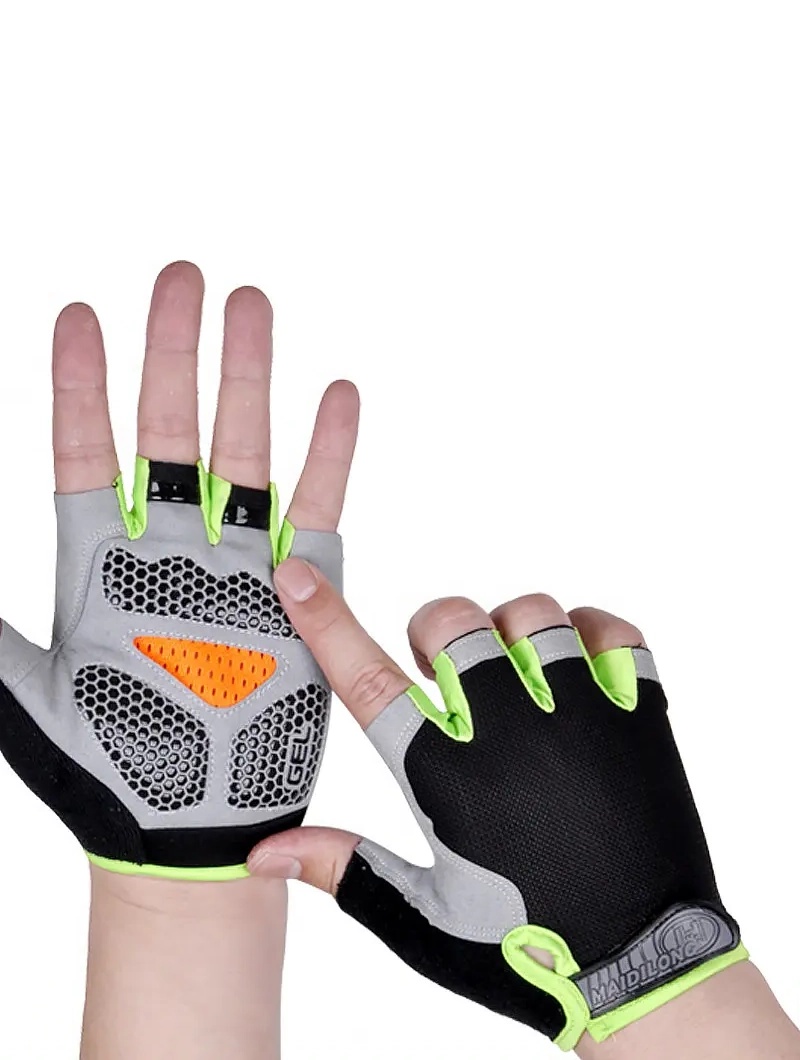Mountain Bike Maintenance: Tips for Keeping Your Bike in Top Condition
Maintaining and caring for your mountain bike is crucial for both safety and optimal performance. As someone who loves to hit the trails and explore the outdoors on my bike, I know firsthand the importance of keeping my bike in top condition. Regular maintenance and care not only extend the life of your bike but also ensure that each ride is safe and enjoyable.

To keep your mountain bike in good condition, it’s important to understand the basic components of your bike and how they work together. From there, you can perform basic pre-ride checks to ensure that everything is in working order. Regular cleaning and maintenance of the drivetrain, brakes, tires, and suspension are also essential to keep your bike running smoothly and safely.
In this article, I will share some tips and tricks for mountain bike maintenance and care. Whether you’re a beginner or an experienced rider, these tips will help you keep your bike in top shape and ensure that each ride is a great one.
Key Takeaways
- Understanding the basic components of your mountain bike is essential for proper maintenance and care.
- Regular cleaning and maintenance of your bike’s drivetrain, brakes, tires, and suspension are crucial for safety and optimal performance.
- Following a regular maintenance schedule and incorporating additional tips and tricks can help extend the life of your bike and improve your overall riding experience.
Understanding Your Mountain Bike
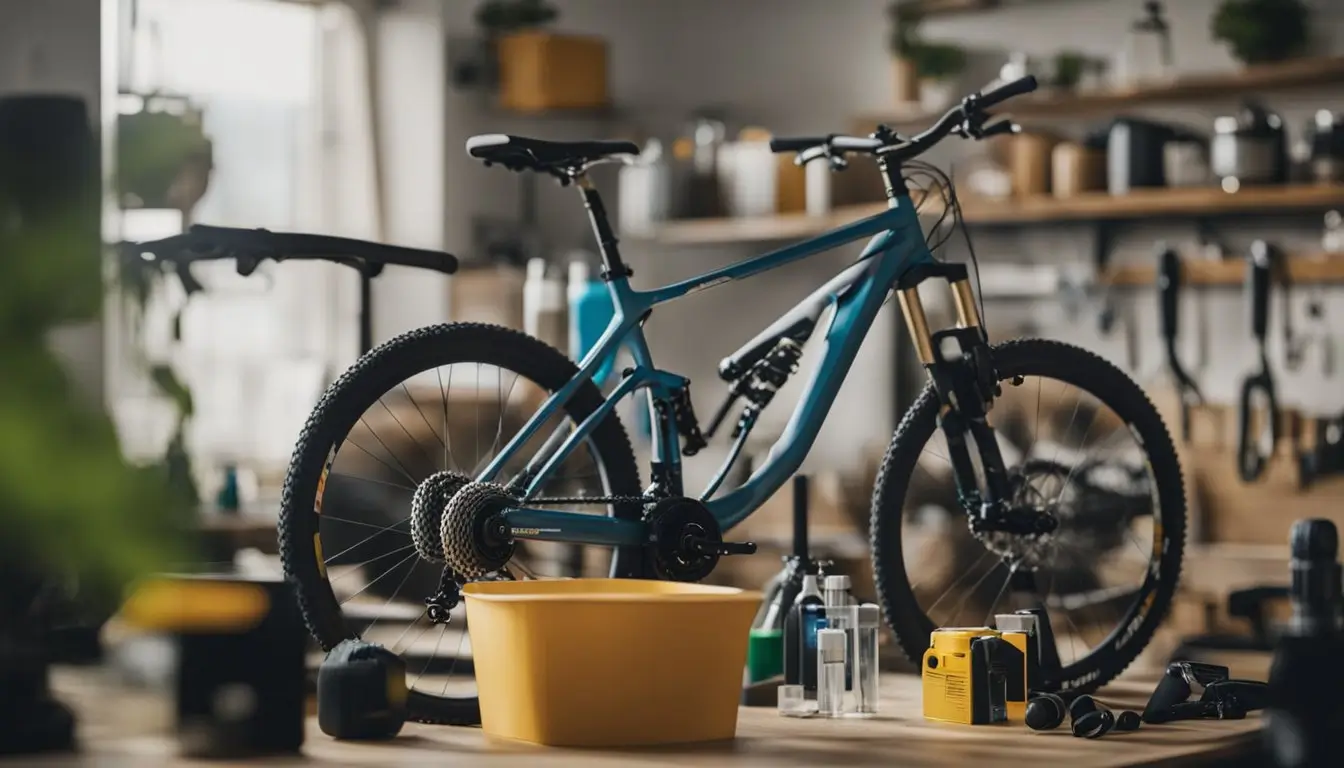
As a mountain biker, it’s important to understand the different components of your bike and how they work together. This knowledge can help you identify issues and perform basic maintenance tasks. Here are some key components to familiarize yourself with:
Frame
The frame is the backbone of your mountain bike, and it’s where all the other components are attached. Frames are typically made of aluminum, carbon fiber, or steel. Each material has its own strengths and weaknesses, so it’s important to choose a frame that suits your riding style.
Fork
The fork iconnects the front wheel to the frame and It is important for absorbing shock and providing control on rough terrain. There are two types of forks: rigid and suspension. Rigid forks are lighter and simpler, but suspension forks are better for rough terrain.
Wheels and Tires
The wheels and tires are what keep you rolling on the trail. Mountain bike wheels are typically made of aluminum or carbon fiber, and they come in a variety of sizes. Tires are available in different widths and tread patterns, which affect traction and rolling resistance.
Drivetrain
The drivetrain is what powers your bike. It includes the chain, cassette, derailleur, and crankset. The number of gears on your bike depends on the number of chainrings and cogs in your cassette. A larger number of gears gives you more options for different terrain.
Brakes
Mountain bike brakes are essential for safety and control. There are two types of brakes: disc brakes and rim brakes. Disc brakes are more powerful and work better in wet conditions, while rim brakes are lighter and simpler.
Pedals
Pedals are what keep your feet attached to the bike. There are two types of pedals: flat pedals and clipless pedals. Flat pedals are simple and allow you to easily put your foot down if needed. Clipless pedals require special shoes and cleats, but they provide more power and control.
Dropper Post
A dropper post is a seatpost that can be lowered and raised with a remote lever. This allows you to quickly adjust your saddle height while riding, which can be helpful for technical descents.
Other Components
Other important components include the stem, handlebar, headset, hubs, and cranks. These parts all work together to provide control and power on the trail.
By understanding these components and how they work together, you’ll be better equipped to maintain and care for your mountain bike.
Basic Pre-Ride Checks
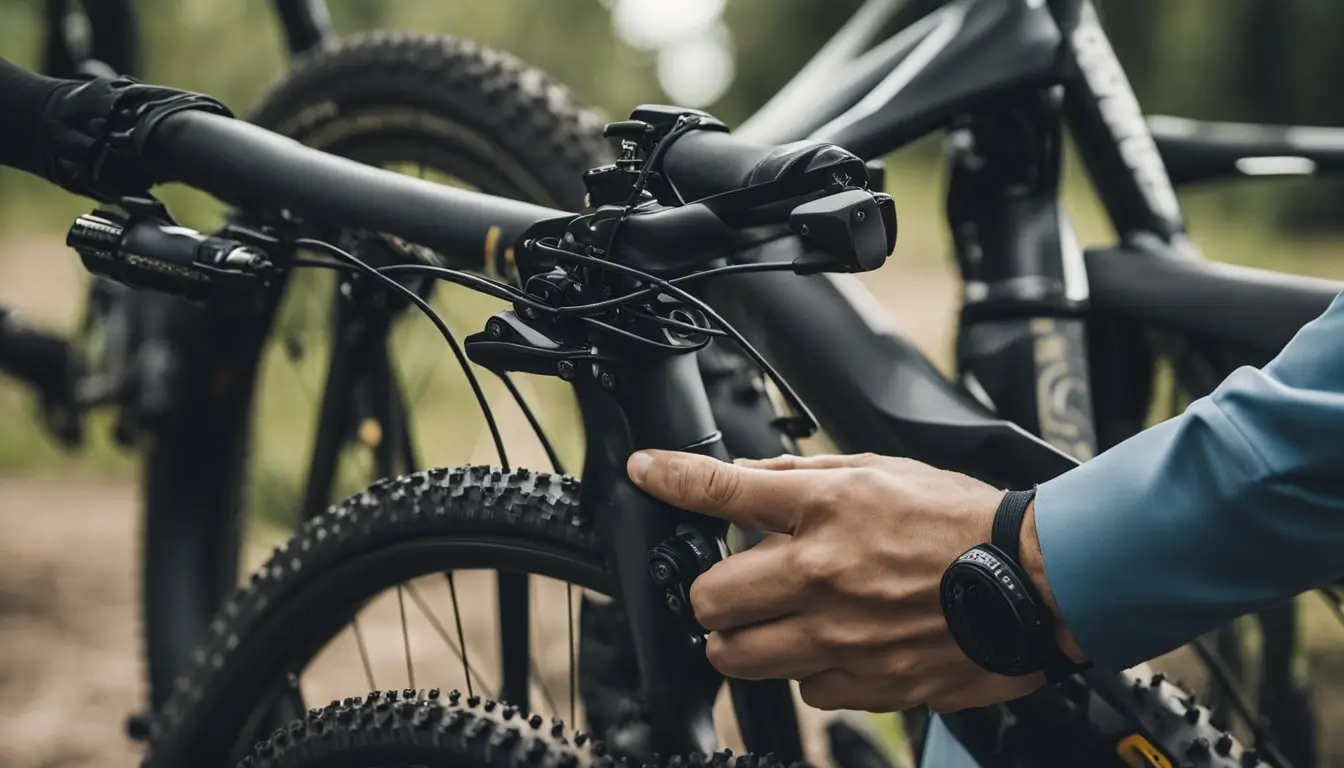
Before hitting the trails, it’s important to perform some basic pre-ride checks to ensure that your mountain bike is in good working order. Taking a few minutes to do these checks can save you from potential issues and keep you safe on your ride.
First, I always start with checking the tire pressure and recommend that you stay within the parameters of the manufactures tyre pressure guidelines. I use a pressure gauge to ensure that my tires are inflated to the recommended pressure, which can usually be found on the sidewall of the tire. If the pressure is too low, it can cause pinch flats or make it harder to pedal. If the pressure is too high, it can make the ride uncomfortable and reduce traction.
Next, I inspect the tires for any cuts, punctures, or other damage. A damaged tire can lead to a flat or even a blowout, which can be dangerous on the trail. I also check the brake levers to make sure they are working properly and that there is enough brake pad material left. If the brake pads are worn down, they should be replaced before riding.
I check the brake cables and rotors for any signs of wear or damage. A frayed or damaged cable can cause the brakes to fail, while a warped rotor can cause the brakes to rub or squeak. I also check the gear shifting to make sure that it is smooth and accurate. If the shifting is not working properly, it may be time to adjust the derailleur or replace the chain.
I inspect the chain and cassette for any signs of wear or damage. A worn chain or cassette can cause skipping or jumping gears, which can be frustrating and potentially dangerous. I also check the rear derailleur and front chain rings for any signs of damage or wear. If any of these components are damaged, they should be replaced before riding.
Finally, I check the air pressure and sag on my suspension. Proper suspension settings can make a big difference in the comfort and performance of your ride. I also check for any leaks or damage to the suspension components.
Performing these basic pre-ride checks can help ensure that your mountain bike is in good working order and ready for your next ride. Happy trails!
Cleaning Your Mountain Bike
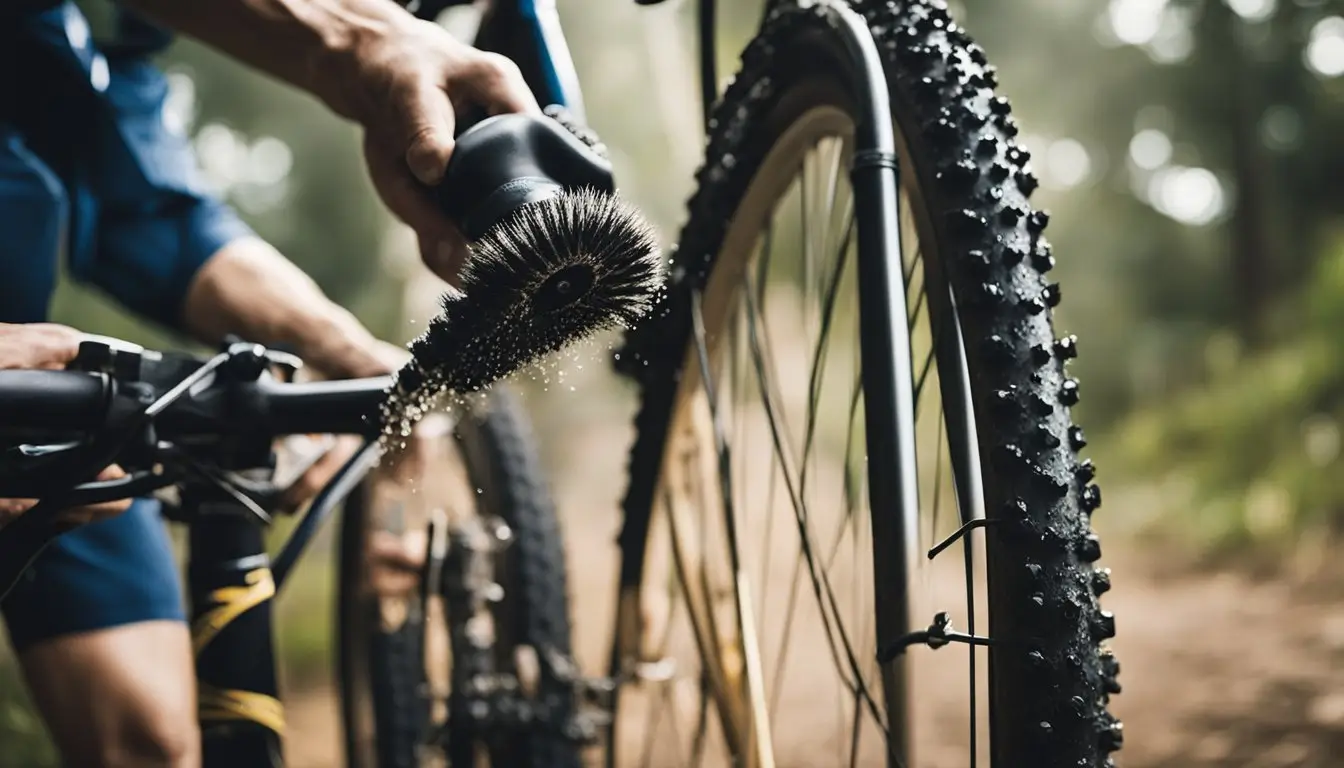
Keeping your mountain bike clean is essential for maintaining its performance and longevity. A clean bike not only looks good, but it also helps prevent dirt and grime from damaging the components. In this section, I will walk you through the steps to clean your mountain bike.
Before you start cleaning, gather your supplies. You will need a hose, a bucket, biodegradable soap, a sponge or brush, and a bike wash. Biodegradable soap is important because it is eco-friendly and won’t harm the environment. Start by wetting your bike with a hose, being careful not to spray water directly into the bearings or suspension components.
Next, apply the bike wash to the frame and components, using a sponge or brush to scrub away dirt and grime. Be sure to pay extra attention to the chain, cassette, and derailleurs. Once you have scrubbed everything down, rinse your bike thoroughly with the hose.
After rinsing, use a clean sponge or brush to wipe down your bike and remove any remaining dirt or soap residue. Pay close attention to hard-to-reach areas, such as the bottom bracket and headset. Finally, dry your bike with a clean towel or let it air dry.
In addition to regular cleaning, it’s important to perform more thorough maintenance on your bike periodically. This may include cleaning and lubricating the chain, checking the brakes and gears, and inspecting the frame for cracks or damage. By taking care of your mountain bike, you can ensure that it will perform and serve you well and last for years to come.
Maintaining the Drivetrain
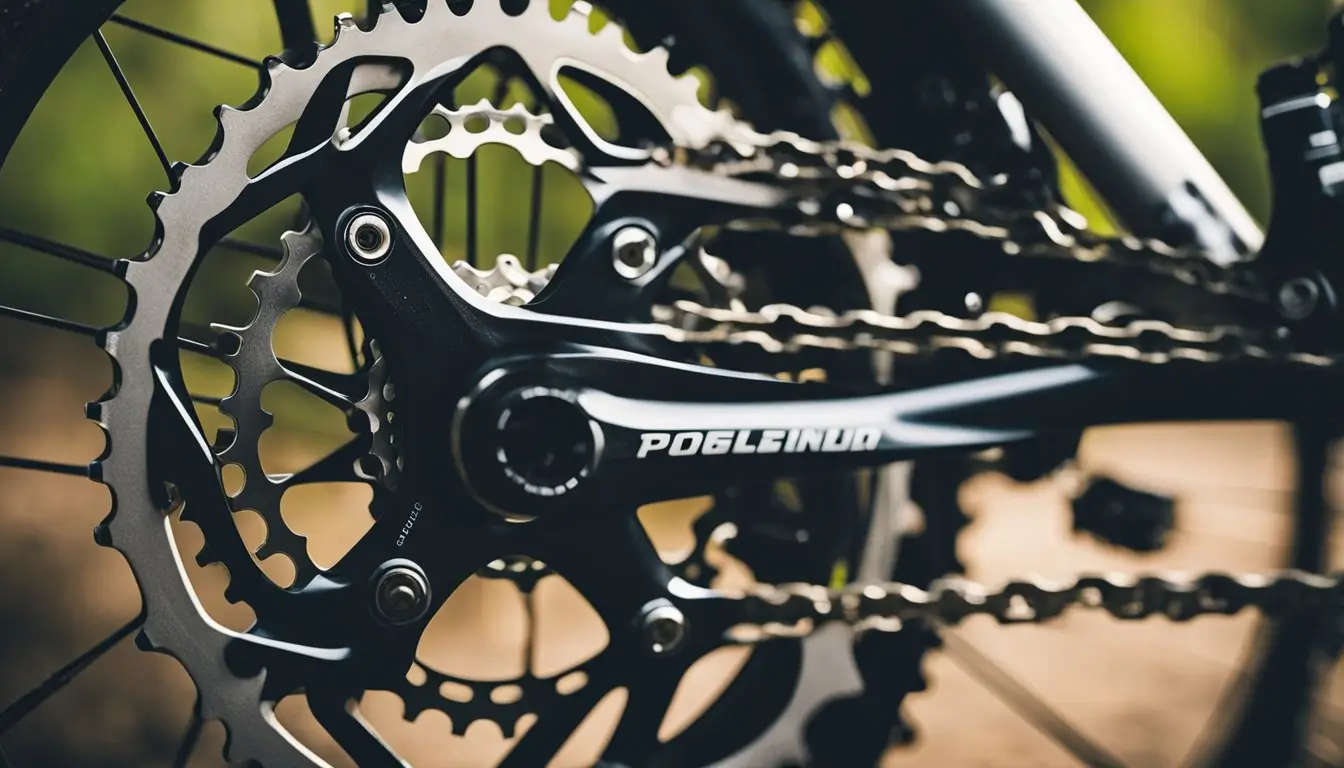
As a mountain biker, I know that the drivetrain is one of the most critical components of my bike. It consists of the chain, cassette, chainrings, derailleurs, and pedals, and it is responsible for transferring power from my legs to the wheels. Proper maintenance of the drivetrain is essential to keep my bike running smoothly and to prevent costly repairs.
One of the most important things I do to maintain my drivetrain is to keep it clean and well-lubricated. Dirt and grime can accumulate on the chain and cassette, causing friction and wear. I use a degreaser to remove any dirt and grime from the chain and cassette, and then I lubricate the chain with a high-quality chain lube. I make sure to apply the lube evenly and wipe off any excess to prevent attracting more dirt.
Another critical component of the drivetrain is the rear cassette. Over time, the teeth on the cassette can wear down, causing the chain to skip or slip. I check the cassette regularly for wear and replace it if necessary. I also make sure to keep the derailleur clean and properly adjusted to ensure smooth shifting.
Chain wear is another common issue with drivetrains. As the chain stretches and wears, it can cause the cassette and chainrings to wear down as well. I check my chain regularly for wear using a chain wear indicator tool, and I replace it if it has stretched beyond its recommended limit.
Proper lubrication and maintenance of the drivetrain can prolong the life of your bike and prevent costly repairs. By keeping your chain, cassette, and derailleur clean and well-lubricated, you can ensure that your bike runs smoothly and efficiently on the trails.
Caring for Your Bike’s Brakes
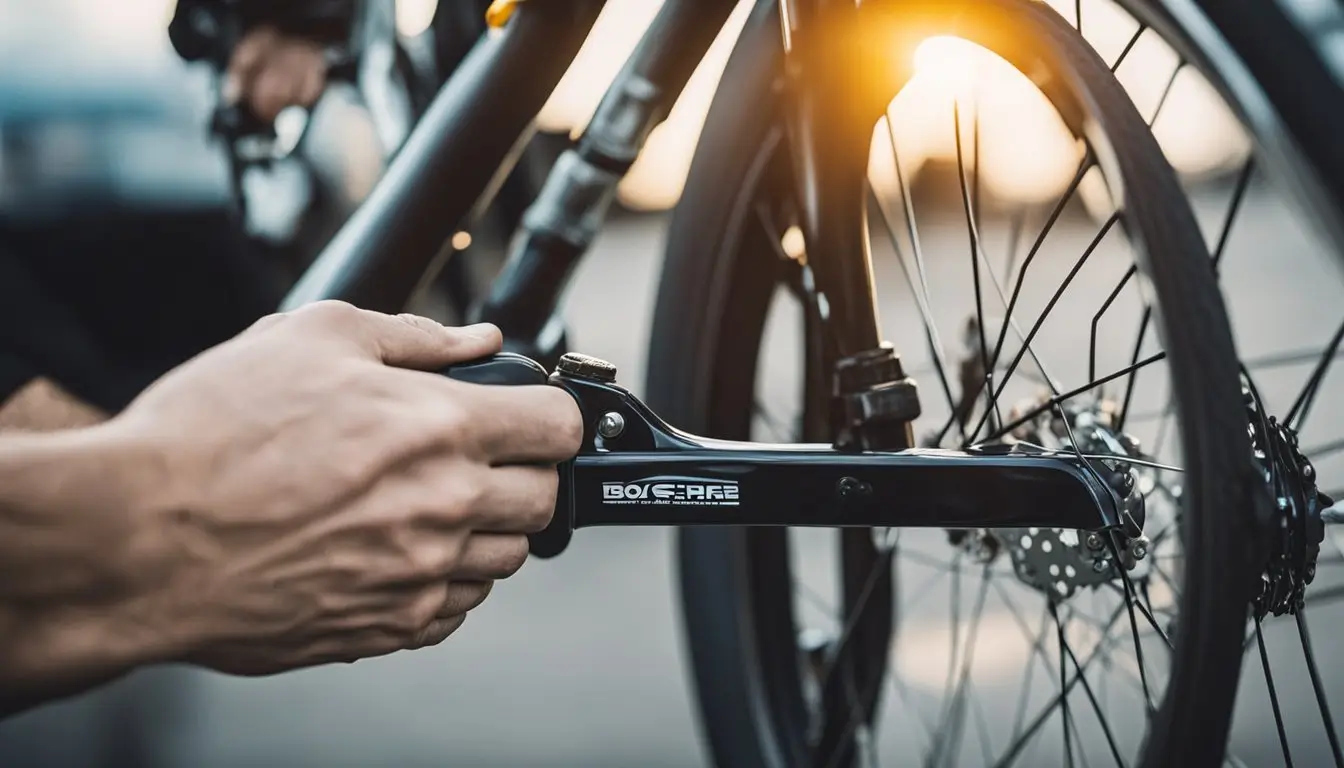
As a mountain biker, I know how important it is to have reliable brakes when going down steep descents or navigating technical terrain. That’s why I always make sure to take good care of my bike’s brakes. Here are a couple of tips you may find helpful it:
Regularly Inspect Your Brakes
Before every ride, I make sure to inspect my brakes to ensure that they are in good working condition. I check the brake pads to make sure they still have enough material and are not worn out. I also check the brake levers to make sure they are not loose and that they engage the brakes properly. Additionally, I check the brake cables to make sure they are not frayed or damaged.
Clean Your Brakes
Cleaning your brakes is an important part of maintenance. Dirt and debris can build up on your brake pads and rotors, which can reduce their effectiveness. To clean my brakes, I use a clean rag and rubbing alcohol to wipe down the brake pads and rotors. I also make sure to clean the caliper and brake lever to ensure that they are free of dirt and debris.
Adjust Your Brakes
If your brakes are not engaging properly or feel spongy, it may be time to adjust them. I always refer to the manufacturer’s instructions to ensure that I am adjusting my brakes correctly. If you have mechanical disc brakes, you may need to adjust the position of the brake pads so that they are closer to the rotor. If you have hydraulic disc brakes, you may need to bleed the system to remove any air bubbles.
Replace Your Brake Pads
Brake pads wear out eventually and need to be replaced periodically. I always make sure to replace my brake pads before they become too worn down. If you notice that your brake pads are thin or worn out, it’s time to replace them. Make sure to use the correct type of brake pads for your bike’s brakes.
Replace Your Brake Cables
If your brake cables are frayed or damaged, it’s time to replace them. I always make sure to use high-quality brake cables to ensure that my brakes are working properly. If you are not comfortable replacing your brake cables, take your bike to a professional bike mechanic.
By regularly inspecting, cleaning, and adjusting your bike’s brakes, you can ensure that they are working properly and will respond effeciently to your command when you need them.
Maintaining Your Bike’s Tires
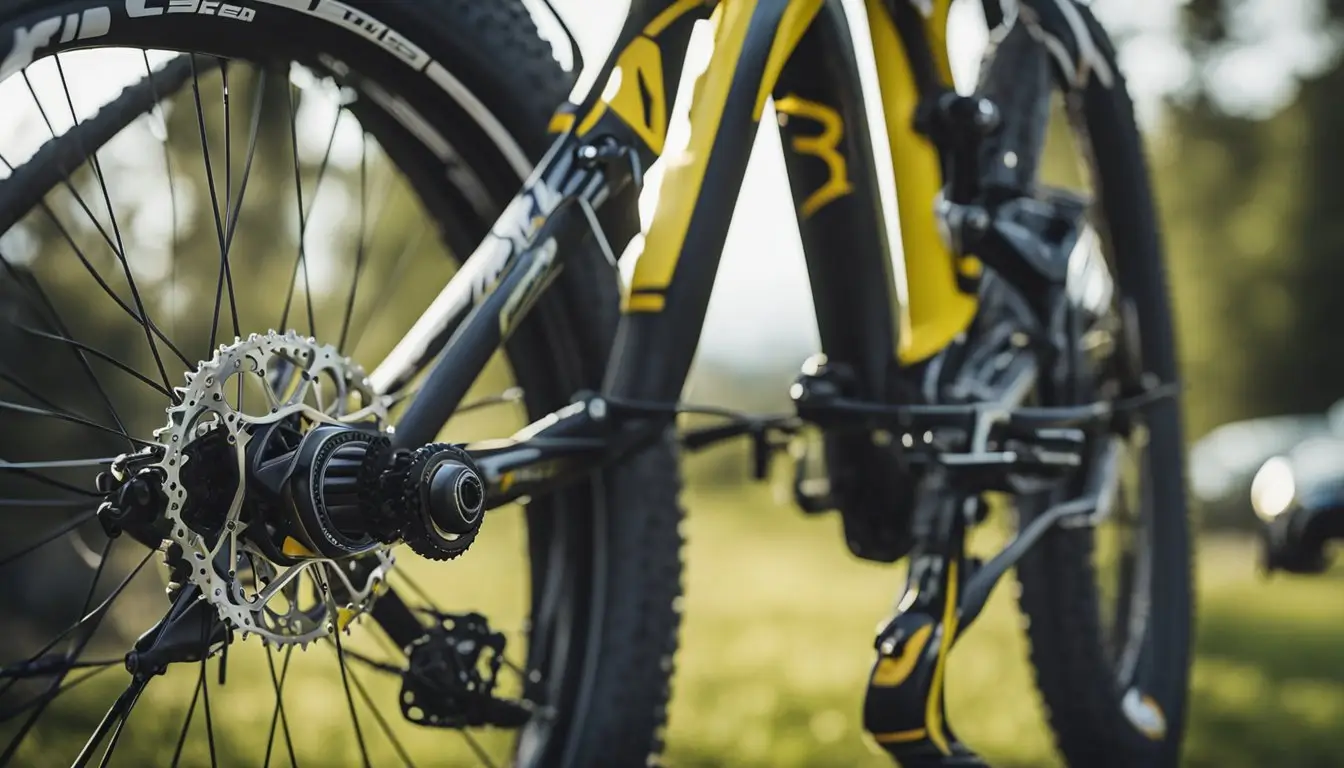
As a mountain biker, maintaining your bike’s tires is crucial for optimal performance and safety. Here are some pointers to help you keep your tires in good shape:
Check Tire Pressure Regularly
I always make sure to check my tire pressure before every ride. Properly inflated tires help prevent flats and ensure a smooth ride. YYou should find the recommended tire pressure (PSI) on the tire’s sidewall. Use a bike pump to check the pressure and ensure that it feels firm when you push down on the top of the tire with the palm of your hand.
Inspect Your Tires
Before each ride, I inspect my tires for any signs of damage or wear. Look for cuts, punctures, and bulges in the tire. If you notice any i suggest you change the tire immediately. It’s also important to check the tread depth and make sure it’s not worn down too much. A worn-out tire can lead to poor traction and increased risk of accidents.
Maintain Spokes
Spokes play an important role in supporting the weight of the bike and rider. Check your spokes regularly to make sure they are tight and not broken. Loose or broken spokes can cause your tire to wobble or even collapse, leading to a dangerous situation. Tighten any loose spokes with a spoke wrench.
Rotate Your Tires
Rotating your tires can help them wear more evenly and last longer. I typically rotate my tires every few months or whenever I notice uneven wear. Simply switch the front tire with the back tire to even out the wear pattern.
By following these tips, you can keep your mountain bike’s tires in good condition and ensure a safe and enjoyable ride.
Mountain Bike Suspension and Steering Maintenance
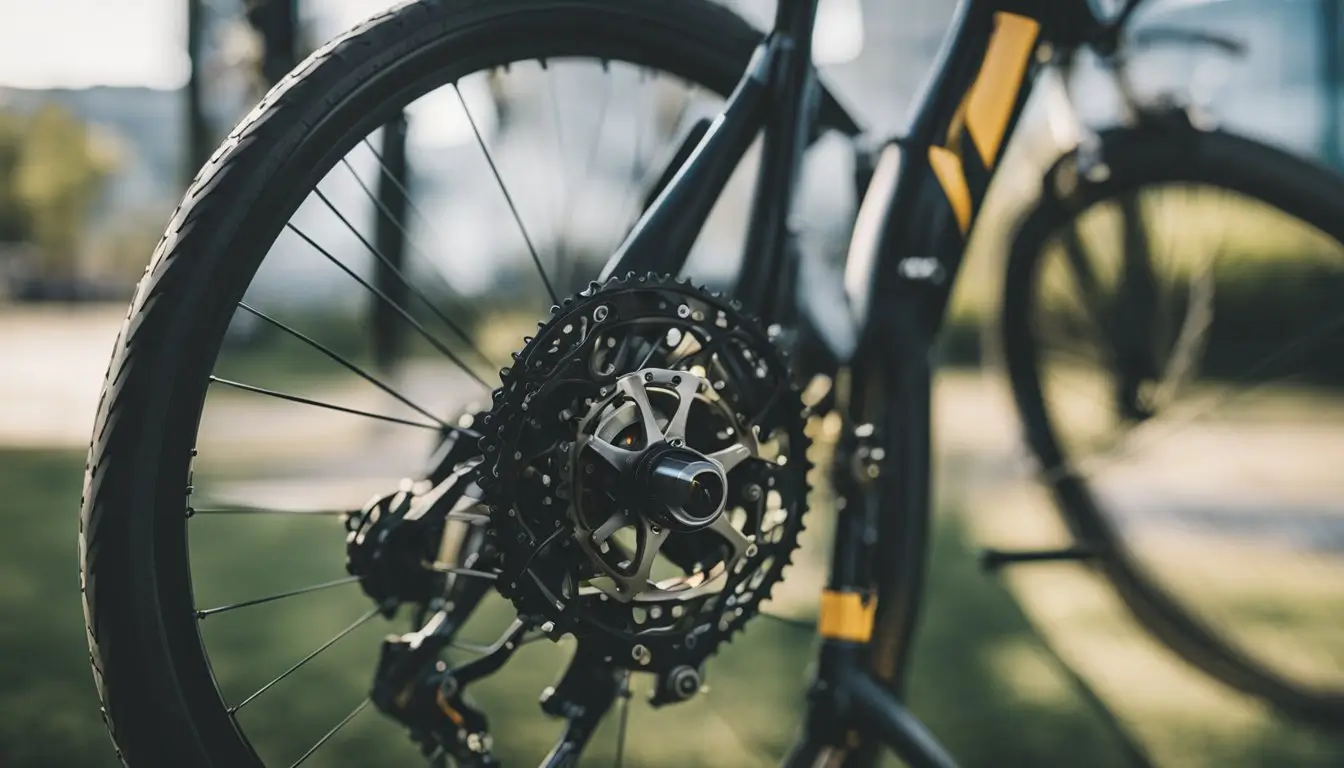
Maintaining the suspension and steering on your mountain bike is crucial for a smooth and safe ride. Here are some tips to keep your bike’s suspension and steering in top shape:
- Clean your suspension regularly: Dirt and grime can build up on your suspension and cause damage over time. Use a soft-bristled brush and mild soap to clean your suspension stanchions and pivot points. Be sure to rinse thoroughly with water and dry completely before riding.
- Inspect your pivot points: Pivot points are where the suspension arms attach to the frame. Over time, these pivot points can wear out or become loose, causing your suspension to feel less responsive. Check your pivot points regularly and tighten any loose bolts.
- Check your stops: Stops are small rubber or plastic pieces that prevent your suspension from bottoming out. If your stops are worn or missing, your suspension could bottom out and cause damage. Check your stops regularly and replace as needed.
- Service your suspension: Manufacturer-recommended service intervals for suspension vary, but it’s generally recommended to service your suspension every 100-200 hours of riding. This may involve cleaning, lubricating, and replacing worn parts.
- Check your steering: Loose or worn steering can make your bike feel unstable and unsafe. Check your headset bearings regularly and adjust or replace as needed.
By following these tips, you can ensure that your mountain bike’s suspension and steering are working properly and provide a smooth and safe ride.
Regular Mountain Bike Maintenance Schedule

As a mountain biker, I know that regular maintenance is essential to keep my bike running smoothly and safely. A well-maintained mountain bike not only performs better but also lasts longer. That’s why I follow a regular maintenance schedule to take care of my investment.
Here is a basic maintenance schedule that I follow:
After Every Ride
- Clean the bike thoroughly with a soft brush and mild detergent, especially after riding in muddy or dusty conditions. Pay special attention to the drivetrain, brakes, and suspension system.
- Check and adjust tire preasure as necessary. Low tire pressure can affect the bike’s handling and performance.
- Check your tires for cuts, punctures, or signs of wear. Replace them if necessary.
- Check the brake pads for wear and replace them if they are worn out.
- Inspect the chain for signs of wear or damage. Lubricate as necessary.
Every Week or Two
- Check the bolts and fasteners on the bike and tighten them if necessary. Loose bolts can cause the bike to rattle or even fail.
- Check the brake and shift cables for any signs of wear or damage. Replace them if necessary.
- Inspect the brake and shift levers for any signs of wear or damage. Replace them if necessary.
- Clean and lubricate the chain, derailleur, and cassette. A clean and lubricated drivetrain will last longer and perform better.
- Check the suspension and frame for any signs of wear or damage. Clean and lubricate the stanchions if necessary.
Every 100-200 Miles or As Needed
- Take the bike to a bike mechanic for a tune-up. A professional tune-up will ensure that your bike is in top condition and will catch any potential problems before they become serious.
Following a regular maintenance schedule may seem like a hassle, but it’s worth it in the long run. By taking care of your bike, you’ll be able to enjoy your rides more and avoid costly repairs down the road.
Additional Tips and Tricks

Maintaining a mountain bike can be a daunting task, but with some additional tips and tricks, it can be a breeze. Here are some of my personal favorites:
- Regularly check your cables: Cables are an essential part of your bike’s shifting and braking system, and they can wear out over time. Regularly check your cables for fraying, rust, or corrosion. If any of these signs are noticable, replace them immediately. A well-maintained cable system will ensure smooth shifting and reliable braking.
- Know your carbon fiber parts: Carbon fiber is a popular material for high-end mountain bikes due to its strength and lightweight. However, they do require special care and attention to prevent damage. Avoid using harsh chemicals or solvents when cleaning carbon fiber parts. Instead, use a mild soap and water solution. Also, be careful not to over-tighten bolts on carbon fiber parts, as it can cause damage.
- Invest in a torque wrench: A torque wrench is an essential tool for any bike mechanic. It helps ensure that bolts are tightened to the correct specification, preventing damage to your bike’s components. Use a torque wrench when installing or adjusting parts like stems, handlebars, and seat posts.
- Maintain your brake rotors: Your brake rotors are an essential part of your bike’s braking system, and they can wear out over time. Regularly check your rotors for wear and replace them if necessary. Also, keep your rotors clean and free of debris to ensure reliable braking performance.
- Choose the right lube: Lubrication is essential for keeping your bike’s moving parts running smoothly. However, not all lubes are created equal. For wet conditions, use a wet lube that is designed to repel water and dirt. For dry conditions, use a dry lube that is designed to stay on your bike’s chain in dusty conditions.
Overall, taking care of your mountain bike is essential for ensuring its longevity and performance. By following these additional tips and tricks, you’ll be well on your way to becoming a bike maintenance pro.
Frequently Asked Questions
What are the essential tools for maintaining a mountain bike?
To maintain a mountain bike, you will need a few essential tools. These include a set of Allen keys, a torque wrench, a chain tool, a pump, a tire lever, and a set of screwdrivers. These tools will help you perform basic maintenance tasks such as adjusting the gears, replacing the brake pads, and changing the tires.
What is a good maintenance schedule for a mountain bike?
A good maintenance schedule for a mountain bike depends on how often you ride it and the conditions in which you ride. As a general rule, you should clean your bike after every ride, lubricate the chain every 100 miles, and have a full service every six months. However, if you ride your bike in harsh conditions, you may need to perform maintenance tasks more frequently.
How do you properly service a mountain bike?
To properly service a mountain bike, you will need to perform a range of maintenance tasks. These may include adjusting the gears, replacing brake pads, changing the tires, and servicing the suspension. It is important to follow the manufacturer’s instructions and use the correct tools for each task. If you are not confident in your ability to service your bike, it is best to take it to a professional bike mechanic.
What are some tips for cleaning a mountain bike?
Cleaning your mountain bike is an important part of maintenance. To clean your bike, you will need a bucket of soapy water, a sponge, and a hose. Start by rinsing your bike with the hose, then use the sponge to clean the frame, wheels, and components. Pay particular attention to the chain, cassette, and derailleur. After cleaning, rinse your bike with the hose and dry it with a clean cloth.
How often should a mountain bike be inspected for maintenance?
A mountain bike should be inspected for maintenance regularly. As a general rule, you should inspect your bike before every ride. This includes checking the tire pressure, brakes, gears, and suspension. You should also inspect your bike after every ride and clean it as necessary.
What are the most important maintenance tasks for bike parts?
The most important maintenance tasks for bike parts include lubricating the chain, checking and adjusting the gears, replacing brake pads, changing the tires, and servicing the suspension. It is important to perform these tasks regularly to ensure that your bike is safe and performs at its best.

